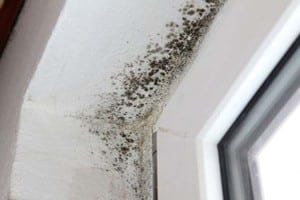News of the battered housing market may have pushed indoor mold from the media spotlight but the problem has not went away. Mold invades newer and older homes alike. Indoor mold is a problem that cannot simply be painted over and forgotten.
Types of Mold:
- Penicillium/aspergillus
- Most common
- Can cause paranasal sinus infections and the symptoms include fever, cough, chest pain or breathlessness, which also occur in many other illnesses so diagnosis can be difficult.
- Usually, only patients with already weakened immune systems or who suffer other lung conditions are susceptible.
- Stachybotrys chartarum (black mold)
- Much feared and more toxic then penicillium/aspergillus
- Symptoms of Stachybotrys exposure in humans depend on the length of exposure and volume of spores inhaled or ingested, symptoms can manifest as chronic fatigue or headaches, fever, irritation to the eyes, mucous membranes of the mouth, nose and throat, sneezing, rashes, and chronic coughing.
- In severe cases of exposure or cases exacerbated by allergic reaction, symptoms can be extreme including nausea, vomiting, and bleeding in the lungs and nose.
What You Can Do About It
If you have mold the best thing to do would be to remove everything that could contribute to mold growth in a house. Unfortunately, everything that makes living in a house so pleasant is equally pleasant to the mold. If a house is of a certain age then it probably has mold of some kind. The EPA says that even dead mold may still cause allergic reactions in some people, so it is not enough to simply kill the mold. It must be removed. Drywall is porous, and if there’s mold, it is sure to spread. Make sure to have a professional and experienced drywall specialist and painter inspect your walls and ceilings to assess your situation for best results.
Wolff Painting and Wallpapering is highly experienced in both painting and drywall repair.

